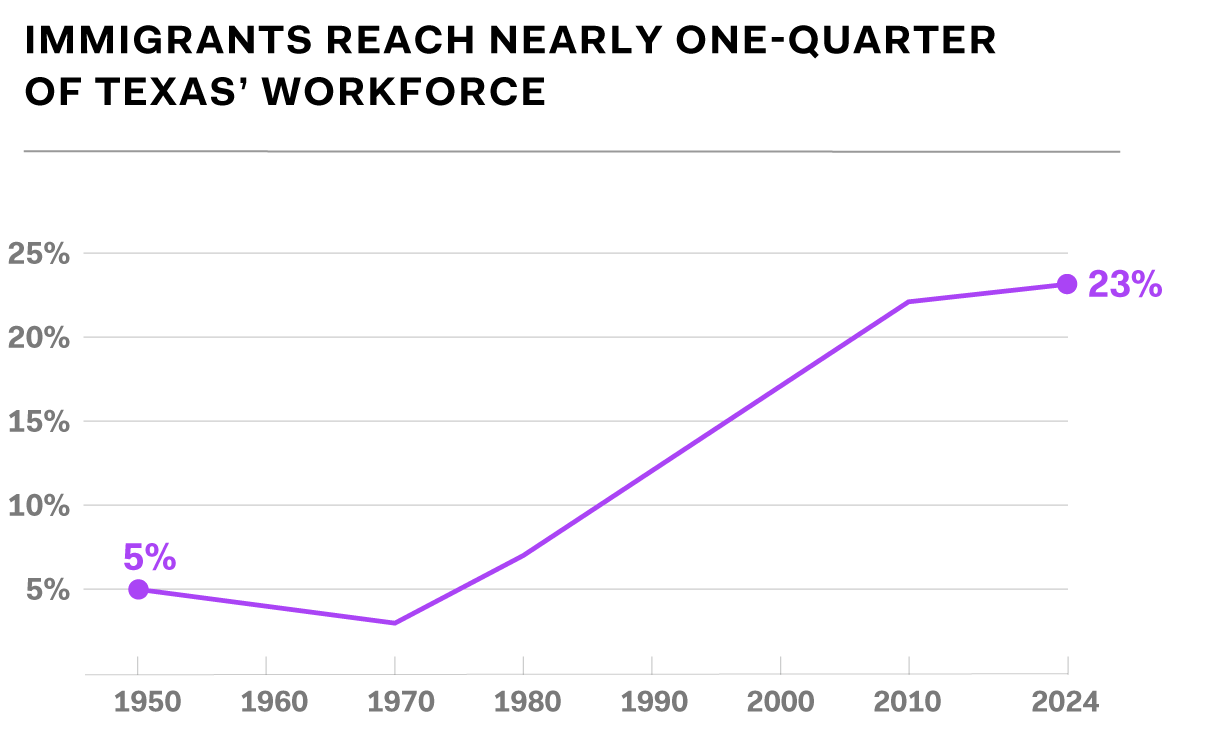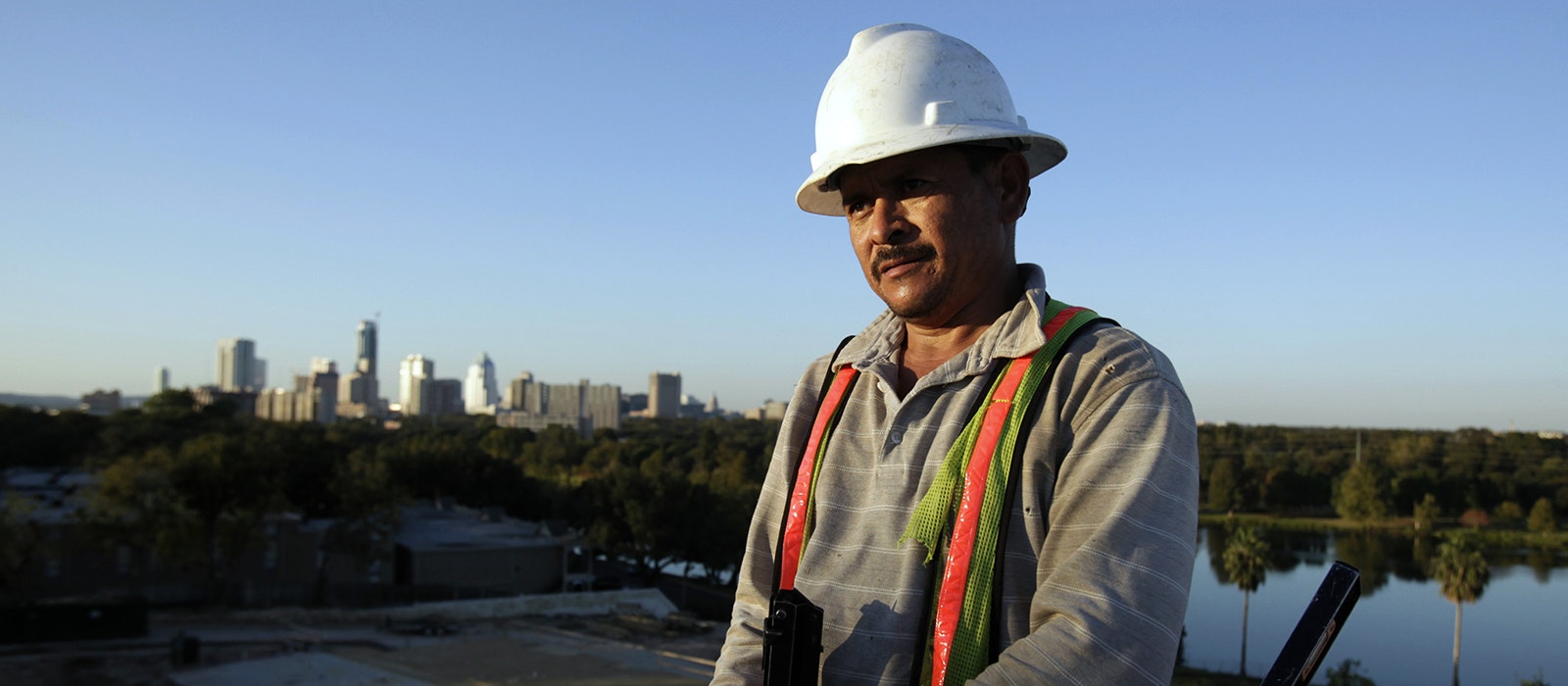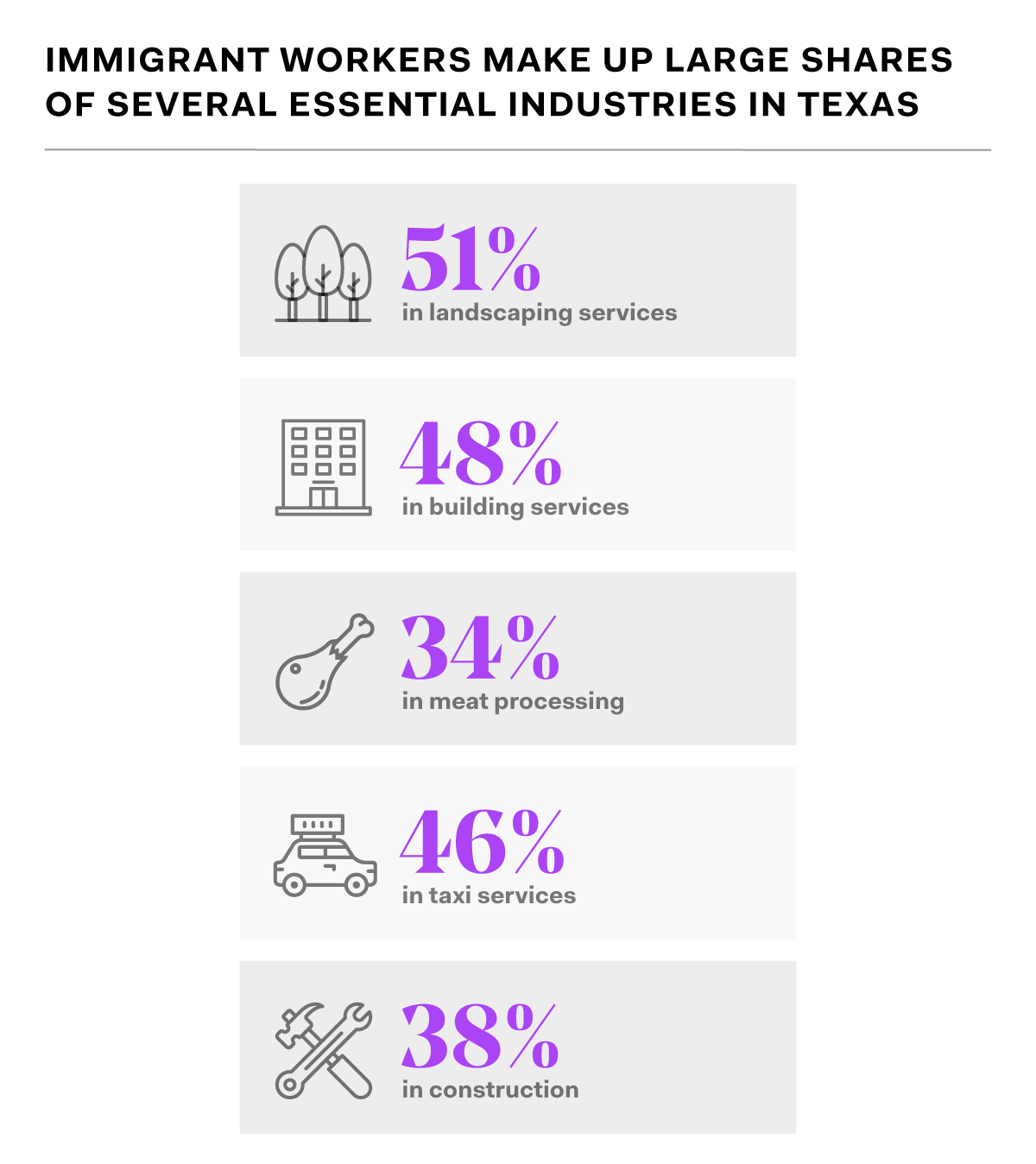"Texas depends on immigrants to grow its economy, and the immigrant labor force cannot be taken for granted"
Immigrants make up nearly a quarter of Texas’ labor force (23%), according to a FWD.us analysis of the most recent U.S. Census Bureau data, nearly doubling the share from three decades ago.1 With more than 3.7 million workers, Texas has America’s second-largest immigrant labor force after California.

Texas benefits from the contributions of immigrants to grow its economy, and the immigrant labor force cannot be taken for granted. Immigrants in Texas’ workforce contribute an estimated $192 billion to the Texas economy annually in personal income, making up nearly 1 in 5 of all spending power dollars in the state. Lawmakers in Austin should prioritize pro-immigrant policies that support families, and that further expand immigrants’ ability to contribute to Texas’ economy.
Use our interactive table below for the immigrant share of critical industries.


